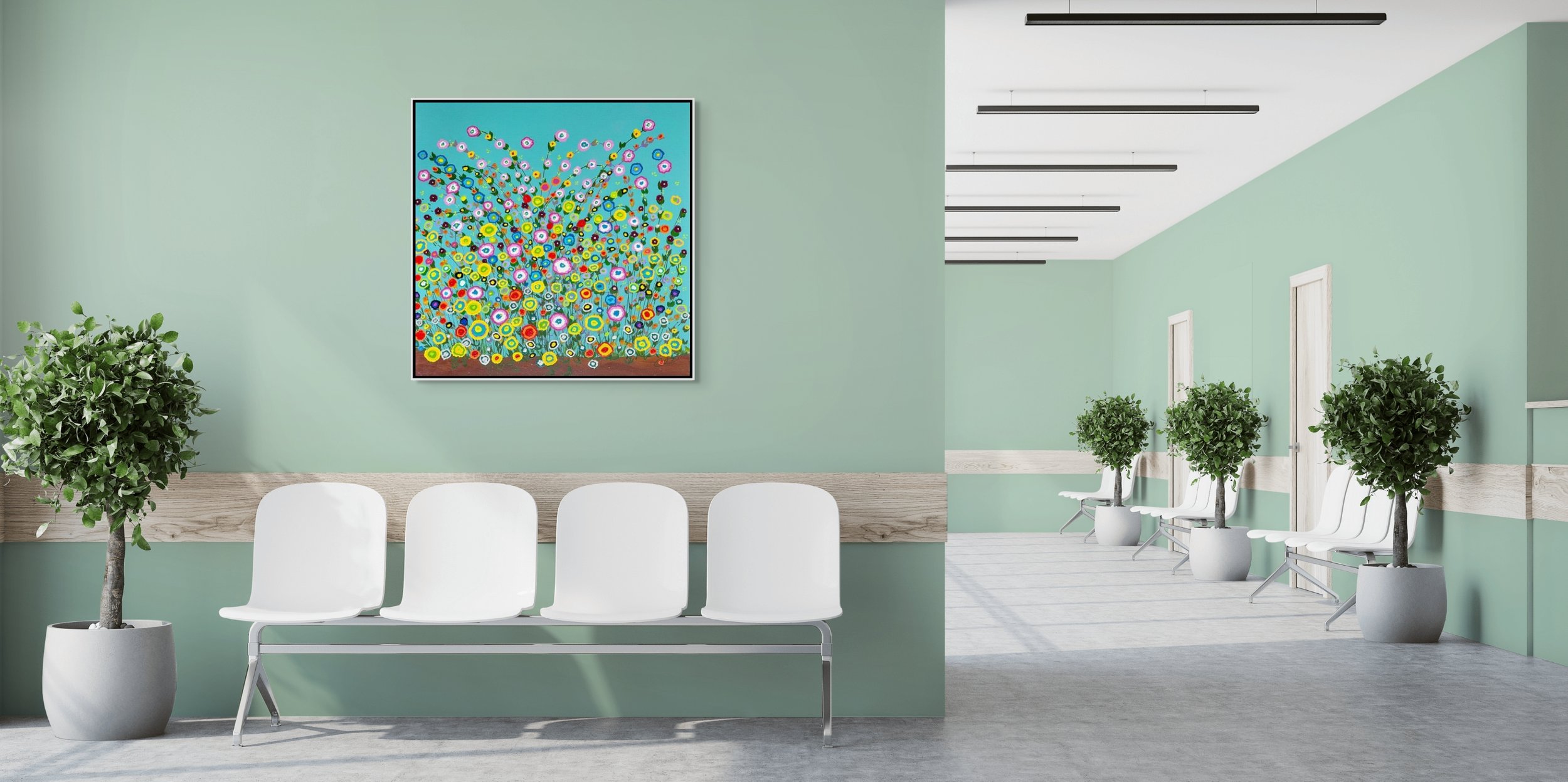Did You Know This About Our Brains And Art?
Did you know a growing body of research shows conclusively that our physical environments (rooms, buildings, walls, etc.) actually have an impact on our quality of life?
Did you know a growing body of research shows conclusively that our physical environments (rooms, buildings, walls, etc.) actually have an impact on our quality of life?
Evidence-based design has been defined as the process of basing design decisions about the built environment on credible research to achieve the best possible outcomes.
When inside built environments our brains get triggered by all kinds of things like color, lighting, texture, and especially art. In one study done on hospital waiting areas, physical and ambient properties influenced patient experiences. Areas associated with higher physical attractiveness reduced anxiety, were perceived to provide better quality of care, and were perceived to have shorter waiting times.
“Similarly, a waiting area with a nouveau (non-traditional) style was associated with lower self-reported stress and higher patient satisfaction than a traditional style.” (Improving the Patient Experience, California Healthcare Foundation)
Fun Fun Everywhere is a playful evidence-based design work of art. It’s a fun painting designed for attractiveness in a nouveau/non-traditional style.
Happy Together With Friends by Dorothea Sandra, EDAC
As I am creating this style of playful evidence-based art, there’s always the challenge of balance. One goal is to trigger the brain to create lots of feelings of fun and happiness without causing any stress. Another goal is to achieve high “distraction” levels of interest, again, without causing stress by overwhelming the viewer with too many details.
Especially when people are troubled or in pain, research studies show that happy art distractions will very positively impact the quality of human life.
For Happy Together With Friends, I was going for the moods of playfulness, happiness, and fun. I also wanted to add in a dash of ironic quirkiness with the hope of making someone—who just didn’t feel good or well—crack a smile.
I have a painting, similar to this one, in the cancer wing of a hospital. When coming out of the blood draw area and on the way to the infusion center, there it is.
Cancer patients, family members, and staff tell me all the time just how much they enjoy that painting. I’ve always suspected it’s the ironic quirkiness built into the painting’s many layers that triggers the brain to create happy emotions, especially at solemn times like this.
These paintings were created—not for their realism or beauty—but to trigger the brain to create the feelings of fun, happiness, and joy.
Take a look inside my book, 100 Days Of Happy Happy Art, Evidence-Based Design
There’s even a chapter on neuroscience and art.
Did You Know This About Our Brains And Art?
Did you know a growing body of research shows conclusively that our physical environments (rooms, buildings, walls, etc.) actually have an impact on our quality of life?
Did you know a growing body of research shows conclusively that our physical environments (rooms, buildings, walls, etc.) actually have an impact on our quality of life?
Evidence-based design has been defined as the process of basing design decisions about the built environment on credible research to achieve the best possible outcomes.
When inside built environments our brains get triggered by all kinds of things like color, lighting, texture, and especially art. In one study done on hospital waiting areas, physical and ambient properties influenced patient experiences. Areas associated with higher physical attractiveness reduced anxiety, were perceived to provide better quality of care, and were perceived to have shorter waiting times.
“Similarly, a waiting area with a nouveau (non-traditional) style was associated with lower self-reported stress and higher patient satisfaction than a traditional style.” (Improving the Patient Experience, California Healthcare Foundation)
Fun Fun Everywhere is a playful evidence-based design work of art. It’s a fun painting designed for attractiveness in a nouveau/non-traditional style.
Happy Together With Friends by Dorothea Sandra, EDAC
As I am creating this style of playful evidence-based art, there’s always the challenge of balance. One goal is to trigger the brain to create lots of feelings of fun and happiness without causing any stress. Another goal is to achieve high “distraction” levels of interest, again, without causing stress by overwhelming the viewer with too many details.
Especially when people are troubled or in pain, research studies show that happy art distractions will very positively impact the quality of human life.
For Happy Together With Friends, I was going for the moods of playfulness, happiness, and fun. I also wanted to add in a dash of ironic quirkiness with the hope of making someone—who just didn’t feel good or well—crack a smile.
I have a painting, similar to this one, in the cancer wing of a hospital. When coming out of the blood draw area and on the way to the infusion center, there it is.
Cancer patients, family members, and staff tell me all the time just how much they enjoy that painting. I’ve always suspected it’s the ironic quirkiness built into the painting’s many layers that triggers the brain to create happy emotions, especially at solemn times like this.
These paintings were created—not for their realism or beauty—but to trigger the brain to create the feelings of fun, happiness, and joy.



























